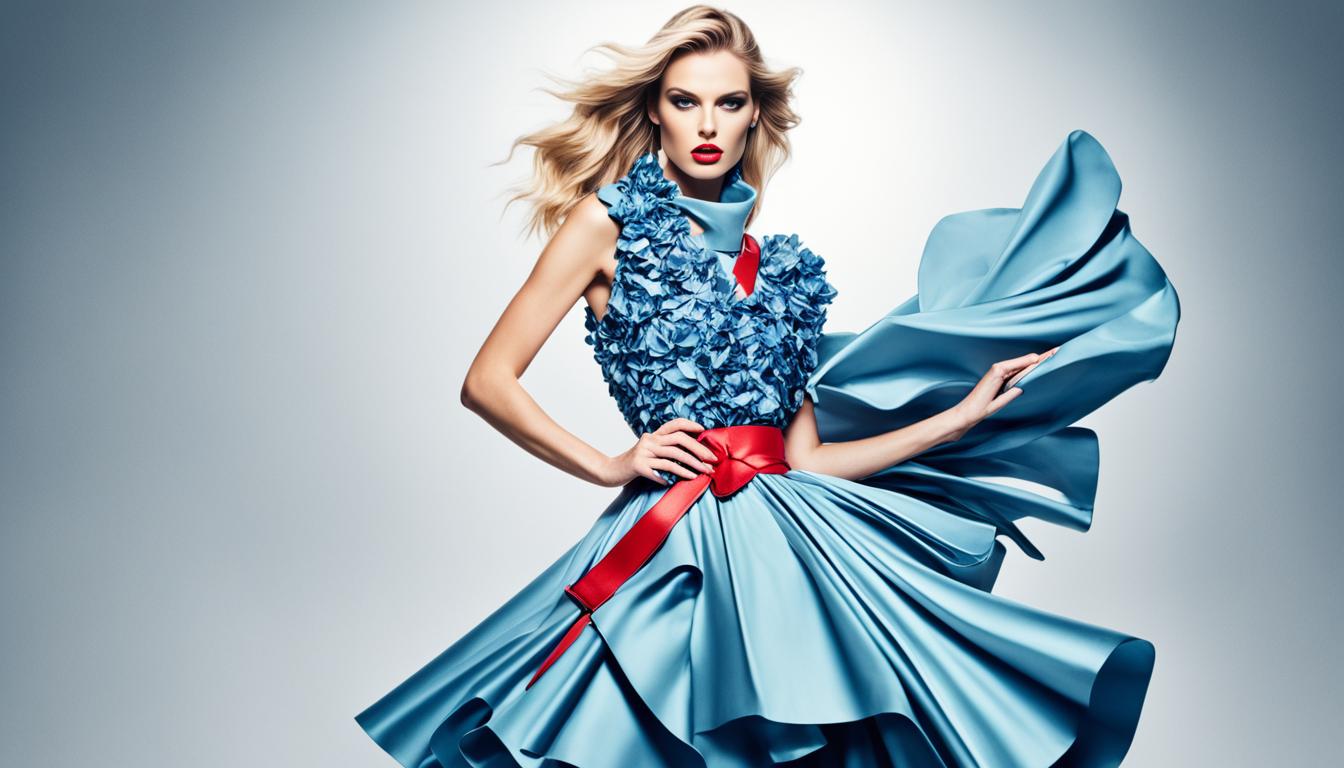Welcome to our guide on how to navigate the legal considerations surrounding copyrights and model releases in the world of fashion photography. As fashion photographers, we understand the importance of protecting our work and ensuring that we are on the right side of the law. By familiarizing ourselves with the nuances of copyrights and model releases, we can confidently create stunning images while respecting the rights of both ourselves and our models.
In the realm of fashion photography, legal considerations are essential. From obtaining model releases to understanding our rights as creators, we need to be well-versed in copyright laws and their implications. This knowledge allows us to avoid copyright infringement and safeguard our creative endeavors.
In this article, we will delve into the intricacies of copyrights and model releases in fashion photography. We will explain the relationship between photographers and models, the ownership of copyrights, and the significance of intellectual property. By the end, you will have a comprehensive understanding of the legal landscape, helping you navigate your fashion photography career with confidence.
Key Takeaways:
- Understanding the legal considerations surrounding copyrights and model releases is crucial for fashion photographers.
- Photographers own the copyright to their work, while models typically sign a model release granting permission for the photographer to sell and use their photos.
- Intellectual property issues, such as the use of trademarks or logos, and the distinction between editorial and commercial use of images, should be taken into account.
- Models have few rights regarding the use of photos in which they are featured, as the copyright belongs to the photographer.
- Editorial use and commercial use have different requirements regarding model releases.
Model Rights and Model Releases
When it comes to the use of photos featuring models, it’s important to understand the rights involved and the necessity of obtaining model releases as a photographer. While models have limited rights regarding the use of their photos, photographers must secure written permission in the form of a model release to sell and use these images. It’s crucial to recognize that the copyright of a photograph belongs to the photographer, not the model. This ownership grants the photographer exclusive rights to copy, display, create derivative works, and transfer these rights to others.
As photographers, we must have a comprehensive understanding of model rights and the importance of model releases in protecting our work. By obtaining model releases, we ensure that we have the necessary legal permission to use and profit from the photos we capture. This provides us with the confidence and peace of mind to pursue our photography career without the risk of copyright disputes or infringements.
Model releases serve as a vital tool in securing the necessary permissions for commercial use, such as including the images in marketing materials or selling them to clients. Without a model release, we risk potential legal repercussions and face challenges in monetizing our work. To maintain control and ownership over our photographs, we must prioritize obtaining these releases for every shoot involving models.
“By obtaining model releases, we ensure that we have the necessary legal permission to use and profit from the photos we capture.”
While models may have limited rights, it’s important to approach the creation and use of photographs ethically and responsibly. Respecting the privacy, well-being, and image rights of the models we work with should always be a priority. By maintaining open communication, addressing any concerns or limitations, and obtaining clear consent, we establish a strong foundation of trust and professionalism in our working relationships.
Ultimately, understanding model rights and the significance of model releases as photographers empowers us to protect our work, maintain legal compliance, and continue pursuing our passion for capturing stunning fashion imagery.
Intellectual Property and Editorial Use
Intellectual property is a significant consideration in the world of fashion photography, particularly when it comes to capturing images that feature clothing adorned with trademarks or logos. As photographers, we must be mindful of the legal implications and guidelines surrounding the use of these images. Understanding the distinction between editorial and commercial use is crucial in navigating these complexities.
When it comes to incorporating trademarks or logos in fashion photographs, the rules differ depending on the purpose of the image. If the use of such images is purely editorial in nature, meaning they are utilized for informational or educational purposes without promoting products or services, a model release may not be required. However, it is essential to exercise caution and ensure that the use of these logos and trademarks does not create consumer confusion.
Editorial use does not necessarily require a model release, but if the image is used for profit or commercial purposes, a model release is generally necessary.
In contrast, commercial use involves using images to promote products or services for financial gain. In such cases, obtaining a model release is typically required as it grants permission to use the likeness of the model in a commercial context. This release ensures that both the photographer and the model are protected legally and ethically.
Understanding the distinction between editorial and commercial use is crucial in navigating the legal landscape of fashion photography. As photographers, it is our responsibility to obtain proper releases and permissions to avoid any potential copyright infringement. By doing so, we can confidently showcase our work while respecting the intellectual property rights of others.

Protecting Intellectual Property in Fashion Photography
Given the prevalence of logos and trademarks in the fashion industry, it is vital to familiarize ourselves with the intellectual property rights associated with these elements. By understanding the rules and regulations surrounding their use, we can navigate these legal considerations more effectively.
| Intellectual Property Considerations | Guidelines for Use |
|---|---|
| Trademarks and Logos | – Use for editorial purposes without promoting products or services – Ensure images do not create consumer confusion |
| Editorial Use | – Share information without commercial intent – Obtain permission for the use of models’ likenesses depending on the context |
| Commercial Use | – Obtain a model release for images used for profit or promotional purposes – Protect the rights of both the photographer and the model |
Understanding Model Releases
A model release is a crucial document in the world of fashion photography. It serves as written permission from the subject of a photograph, granting the copyright owner the right to publish and use the photo as defined by the release. This legal document outlines the terms and conditions of how the photograph can be used, including details about commercial use, marketing, advertising, and inclusion in a photographer’s portfolio. To ensure compliance with copyright laws and protect both the subject and the photographer, it is essential to understand the basics of model releases and their implications for the use of photographs.
In the context of fashion photography, it is important to note that a model release is distinct from a copyright transfer document. While a model release grants permission for the use of the photo, the copyright of the photograph still belongs to the photographer. This means that the photographer retains the right to copy, display, create derivative works, and transfer these rights to others.
Print releases are another aspect to consider when it comes to model releases. A print release allows clients to print digital files of the photographs within the restrictions specified in the release agreement, while the photographer retains ownership of the copyright. This ensures that the photographer has control over the use and distribution of their work while allowing clients to enjoy printed copies of their favorite photos.
Model Release Form Example:
| Field | Information |
|---|---|
| Model’s Full Name | John Smith |
| Date of Birth | January 1, 1990 |
| Contact Information | johnsmith@example.com |
| Photographer’s Name | Jane Doe |
| Photo Usage | Portfolio, marketing, advertising |
| Commercial Use | Allowed |
| Copyright Transfer | Not applicable |
| Print Release | Allowed under specified conditions |
Understanding and utilizing model releases correctly not only protects the photographer’s rights but also demonstrates professionalism and ensures respect for the subjects involved. By having proper model releases in place, fashion photographers can confidently pursue their creative endeavors while safeguarding their work and avoiding any potential legal issues.
Common Issues in Model Releases for Fashion Photography
In fashion photography, there are several important considerations to address when it comes to using model releases. These considerations are crucial for protecting both the photographer and the model involved in the shoot. Let’s take a look at some common issues that photographers should be aware of:
- Consent: It is essential to obtain explicit consent from the model for the use of all photos taken during the shoot. This ensures that both parties are on the same page regarding the intended use of the images.
- Unflattering and Inappropriate Photos: It is important to clarify whether there are any limitations on the use of certain types of photos, such as unflattering or inappropriate shots. This helps avoid any misunderstandings or potential harm to the model’s reputation.
- Editing: Discussing the extent of editing allowed is crucial. Some models may have preferences regarding retouching or alterations to the images, and it is important to respect their wishes.
- Ads: Determining the scope of ad usage is another important consideration. Models may have preferences regarding the types of ads in which their images can be featured, and this should be clearly addressed in the model release.
- Compensation: Considering fair compensation for the model is essential. Whether it is monetary compensation, trade of services, or other arrangements, it is crucial to discuss and agree upon the terms beforehand.
- Credit: Deciding on the need for credit is another consideration to address in the model release. Some models may require proper credit for their work, while others may prefer to remain anonymous. It is important to respect these preferences.
- Expiration: Addressing the expiration of the model release is crucial. Clearly specifying the duration of the agreement ensures that both parties understand the timeframe within which the photos can be used.
These considerations are particularly relevant in amateur or TFP (Time for Print) shoots, where parties involved may not be established professionals. By addressing these common issues in model releases, fashion photographers can ensure a smooth and mutually beneficial professional relationship with the models they work with.

Conclusion
Understanding the legal considerations of copyrights and model releases is essential for fashion photographers to protect their work and avoid copyright infringement. By comprehending the rights and permissions involved, we can establish a comprehensive overview of where we stand in relation to the law. It is always advisable to seek professional advice when legal issues arise, ensuring that we prioritize legal protection and compliance.
Fashion Photography and Copyrights
In the fast-paced world of fashion photography, copyright ownership is crucial. As photographers, we own the copyrights to our work, giving us the exclusive rights to copy, display, or create derivative works. While models typically sign a model release granting permission for the photographer to sell and use their photos, it is important to be aware of intellectual property issues, including the use of trademarks or logos. Differentiating between editorial and commercial use is also key.
The Role of Model Releases
Model releases play a significant role in protecting our work and ensuring legal compliance. By obtaining written permission from the models, we secure the right to publish and use the photographs as defined in the release. It is important to understand the difference between a model release and a copyright transfer document, as well as the implications of print releases. Model releases address issues such as consent, the use of unflattering or inappropriate photos, editing restrictions, ad usage, compensation, credit, and the expiration of the release.
Prioritizing Legal Protection
In the dynamic field of fashion photography, prioritizing legal protection is crucial for sustaining professional success. By understanding the legal considerations, obtaining proper releases, and seeking professional advice when necessary, we can safeguard our work and ensure compliance with copyright laws. By doing so, we create a solid foundation for our careers in fashion photography, allowing us to continue pursuing our passion while safeguarding our artistic creations.
FAQ
What are model rights and model releases in fashion photography?
Model rights refer to the legal rights of models regarding the use of their photos. Model releases, on the other hand, are written permissions obtained from models to sell and use their photos by photographers. Model releases are crucial to protect the photographer’s work and clarify the scope of usage.
Who owns the copyright to a photograph in fashion photography?
The copyright of a photograph in fashion photography belongs to the photographer, not the model. The photographer has the right to copy, display, create derivative works, and transfer these rights to others.
What is the difference between editorial and commercial use of images?
Editorial use of images involves sharing information, such as in news or educational contexts, while commercial use involves promoting products or services for profit. Model releases are generally required for commercial use, while editorial use may not always require a model release.
What is a model release, and what does it involve?
A model release is a document signed by the subject of a photograph, granting the copyright owner (the photographer) permission to publish and use the photo as defined by the release. It typically includes permissions for portfolio, marketing, advertising, and other commercial purposes.
What are some common issues to consider in model releases for fashion photography?
Common issues in model releases for fashion photography include obtaining consent for the use of all photos, addressing limitations on the use of certain types of photos (such as wardrobe malfunctions), discussing the extent of editing allowed, determining the scope of ad usage, considering compensation for the model, deciding on the need for credit, and addressing the expiration of the model release.
Why is it important for fashion photographers to understand copyrights and model releases?
Understanding copyrights and model releases is crucial for fashion photographers to protect their work, avoid copyright infringement, and ensure legal compliance. It helps photographers navigate the complexities of intellectual property and maintain the rights to their creative output.
Do I Need to Obtain a Model Release for Fashion Photography Collaboration with Designers and Brands?
When partnering with fashion designers for photography collaborations, it’s essential to consider whether a model release is needed. In most cases, a model release will be necessary to protect the rights of the subjects and the parties involved in the collaboration. Always consult with legal counsel to ensure compliance.




